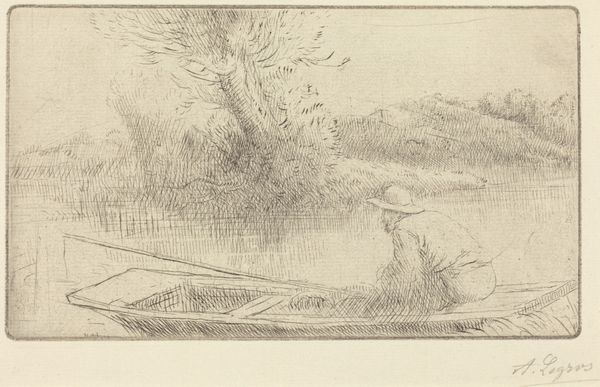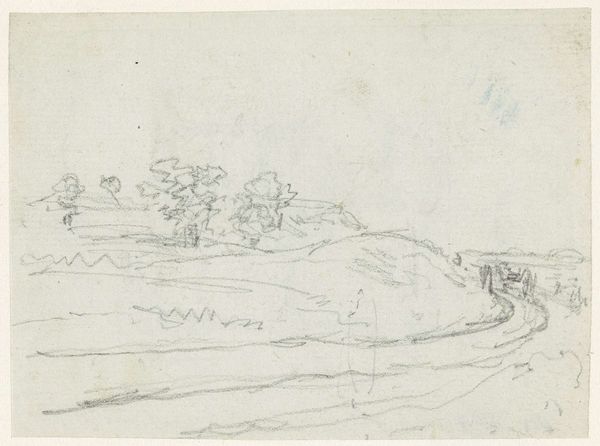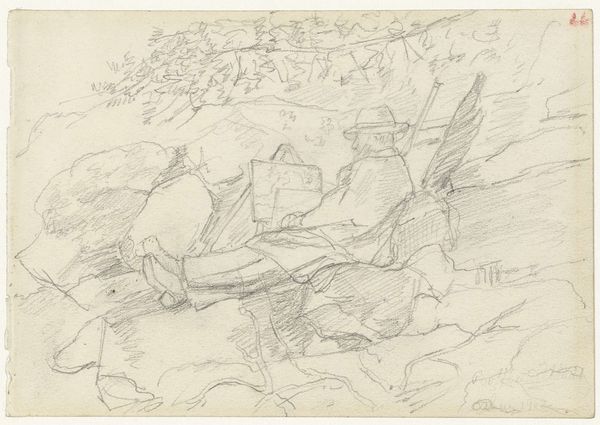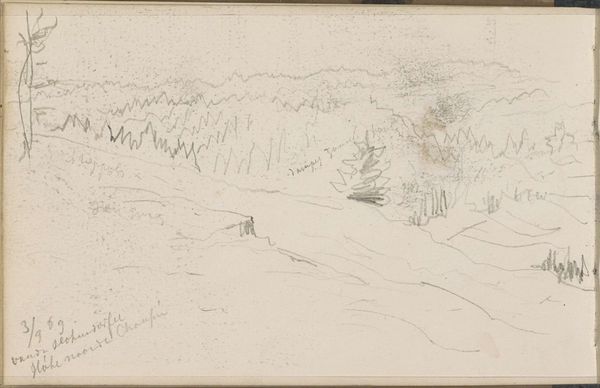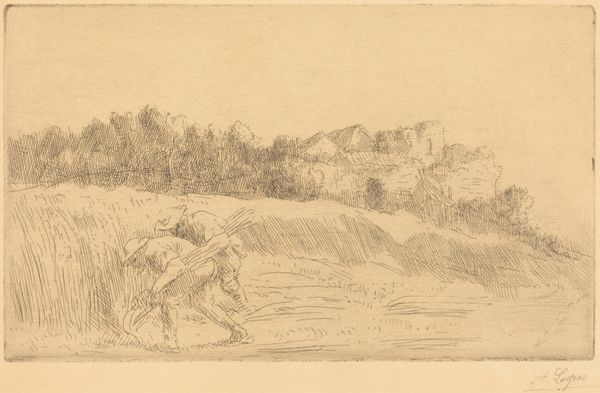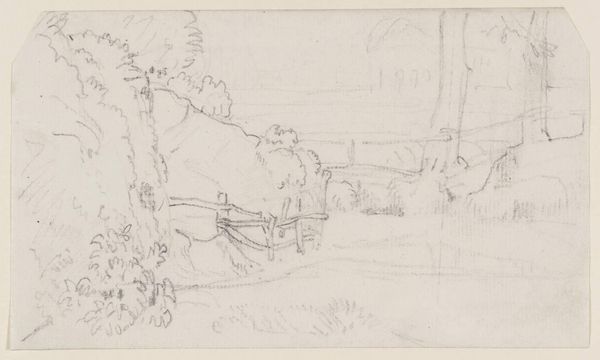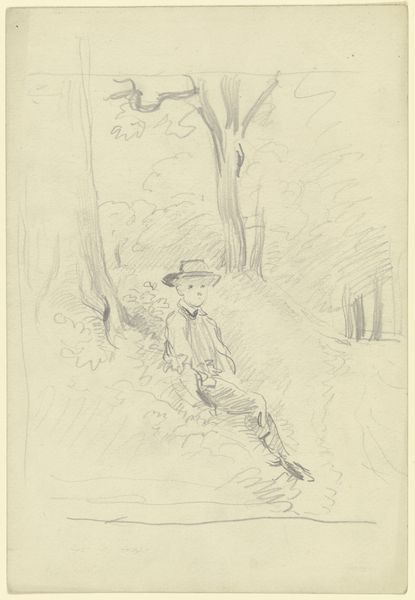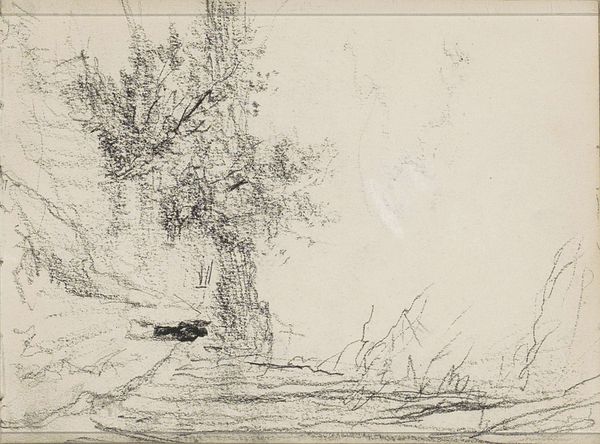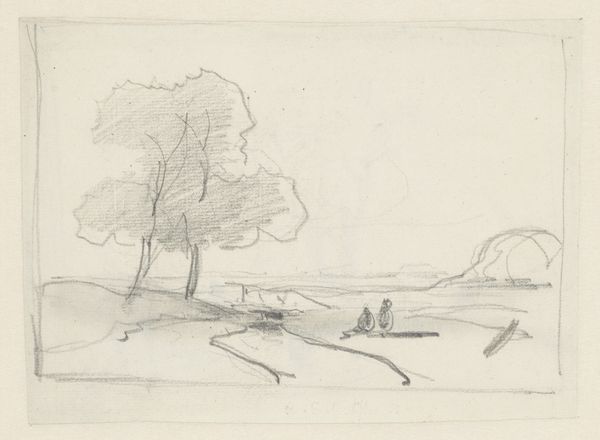![Study for "White Mountains from North Conway, New Hampshire" [recto] by David Johnson](/_next/image?url=https%3A%2F%2Fd2w8kbdekdi1gv.cloudfront.net%2FeyJidWNrZXQiOiAiYXJ0ZXJhLWltYWdlcy1idWNrZXQiLCAia2V5IjogImFydHdvcmtzLzA3MDI3OTkxLWIyNDYtNGY4OC04YTVmLTBjYjU4ZWMxMmI5Ny8wNzAyNzk5MS1iMjQ2LTRmODgtOGE1Zi0wY2I1OGVjMTJiOTdfZnVsbC5qcGciLCAiZWRpdHMiOiB7InJlc2l6ZSI6IHsid2lkdGgiOiAxOTIwLCAiaGVpZ2h0IjogMTkyMCwgImZpdCI6ICJpbnNpZGUifX19&w=3840&q=75)
Study for "White Mountains from North Conway, New Hampshire" [recto] 1851
0:00
0:00
drawing, pencil
#
portrait
#
drawing
#
landscape
#
pencil
#
hudson-river-school
Dimensions: sheet: 20 × 32.39 cm (7 7/8 × 12 3/4 in.)
Copyright: National Gallery of Art: CC0 1.0
Editor: This is David Johnson's "Study for 'White Mountains from North Conway, New Hampshire'" from 1851, a pencil drawing that really captures a sense of tranquility. There’s this figure just sitting, taking it all in. What do you see in this piece, beyond the pretty landscape? Curator: Beyond its aesthetic appeal, it’s crucial to examine the socio-political undercurrents that informed the Hudson River School. The concept of wilderness and frontier was inherently linked to ideas of expansionism and Manifest Destiny, the mythologizing of white settlement and displacement of Indigenous peoples. Editor: So, the beauty is masking something? Curator: Exactly. While celebrating the grandeur of the American landscape, these images often subtly erased or marginalized the presence and rights of Native Americans. This drawing prompts us to question whose perspectives were privileged, whose were silenced, and how landscape art actively contributed to these erasures. What does it mean to depict an "empty" landscape in the context of violent colonial expansion? Editor: That definitely reframes my understanding of it. I was just seeing a nice scene. Curator: Consider also the figure in the landscape. Is it a celebration of individual liberty, or is it the imposition of white male dominance in this land? The Hudson River School aesthetic promoted a vision of America inextricably linked to expansionist ideals. This resonates through the work even in this simple sketch, prompting critical conversations. Editor: I never considered landscape art having such a loaded perspective. It’s powerful to realize that something seemingly innocent could be tied to wider historical narratives of land and power. Curator: Precisely. Seeing it in this light challenges us to look critically at what we consider “natural” and question the power dynamics embedded within these representations.
Comments
No comments
Be the first to comment and join the conversation on the ultimate creative platform.

